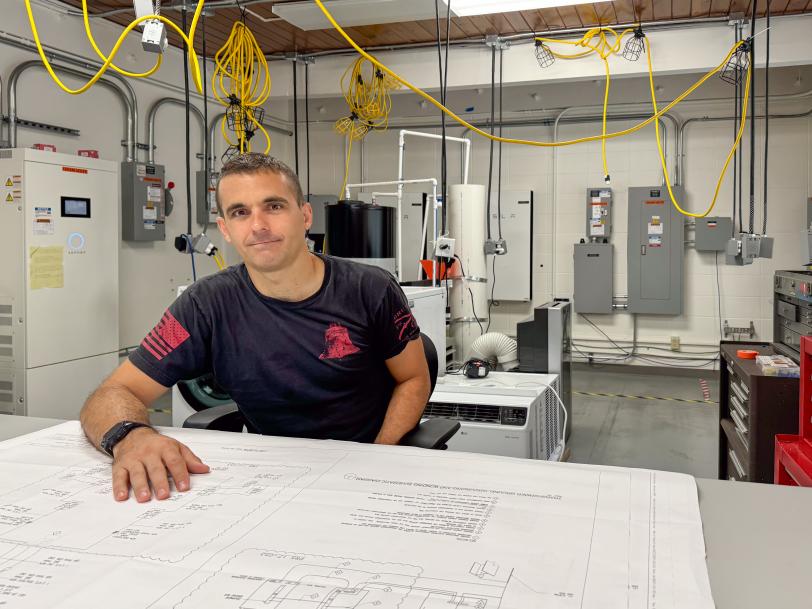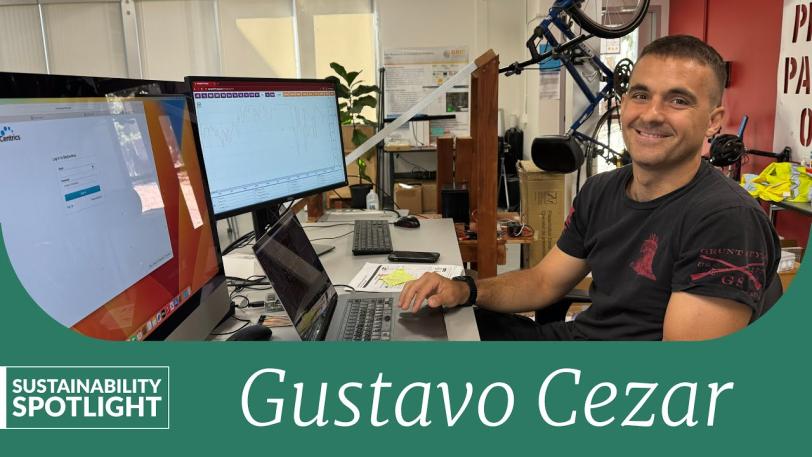This series explores how early-career researchers are helping the DOE's SLAC National Accelerator Laboratory and Stanford University reimagine our energy future. United around the goal of sustainability, these scientists and engineers have embarked on paths that target specific solutions, such as better batteries, alternative energy sources and a stronger electric grid. Their efforts fuel the SLAC-Stanford sustainability ecosystem where bright ideas meet powerful tools for scientific investigation.

Gustavo Cezar
SLAC staff engineer, Applied Energy - Grid Integration Systems and Mobility (GISMo)
PhD in Civil and Environmental Engineering, 2023
Energy that works
I work on the integration of distributed energy resources into the electric grid and understanding their impacts on operations and grid stability. This includes various technologies and devices such as solar, batteries, generators, electric vehicles; general electric loads such as water heaters, thermostats, electric motors; and electric meters and sensors. For example, we want to understand how electric vehicles and related California policies affect the day-to-day activities of people, their behavior, and how they impact the electric grid. I do a lot of work in the agricultural sector, and when you talk to people in this space they say, "There's no way I can use an electric vehicle because I have to carry a lot of weight, my movements are 50-60 miles each way, and I don't have charging infrastructure here." We are not pushing 100% renewable energy. Our approach is to move toward a less fossil-based system for the grid and make sure that the lights are always on. We build bridges between research and real-world applications. Researchers can make a lot of claims based on simulations and computers, but we don't realize the impacts - whether a technology will work - until we deploy it in the field. So, I do a lot of field deployments and showcase the technology to make sure we address real-world constraints. (More on how Gustavo works with farmers in the Central Valley in this article.)

The SLAC-Stanford connection
Pursuing my PhD at Stanford while also working at SLAC enabled me to work on research and science papers plus manage projects and people, get funding and navigate the landscape of stakeholders. My relationships with my former advisor and the team that works on power systems at Stanford are key, because a lot of the work I do here involves students: mentoring them and conducting research in coordination with their advisors. We have access to the best students, faculty and facilities at Stanford, and they have access to the world-class facilities and expertise of a national laboratory - it's an outstanding collaborative relationship. We also work closely with the SLAC sustainability team, and we are trying to push our work into the area of making SLAC a "living lab" for sustainability research - decarbonizing SLAC electricity, pairing battery and solar, EV charging - there are a lot of things we can potentially do here.

Meet Gustavo Cezar: Can We Transition to a Less Fossil Fuel-Based Grid While Ensuring Reliability?
Learn more about how SLAC energy systems engineer Gustavo Cezar helps bridge advanced energy research and applications by better understanding the impacts of new technologies on the everyday lives of people who might benefit. He works closely with SLAC and Stanford University colleagues as part of the lab's Applied Energy Division Integration Systems and Mobility team.
Angela Anderson and Sam Soon/SLAC National Accelerator Laboratory
The inspiration
I would say I got into sustainability by accident - a good accident. I worked in Brazil on combustion engines and came to the U.S. to work on smart grids with my Stanford advisor. From there I moved toward power systems and new technologies. What interests me most are potential applications. Overall, we need to be more sustainable - if we can have a percentage of our power from clean energy sources, why not? But let's be cognizant of the level and maturity of the technology so we don't impact the lives of regular people. Away from the urban centers people are working 24/7, rain or shine, in hot temperatures - and they rely a lot on electricity. When you start to impact the day-to-day lives of people, all the great ideas of sustainability fall through the cracks. For me, the question is how can we develop technologies that will enable everyone to trust that it works, not just those of us in the urban bubble? And maybe there's not a single solution but many complementary solutions. That challenge is what makes me want to work in this space.






